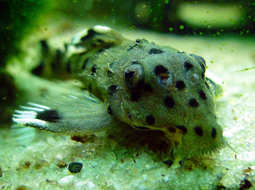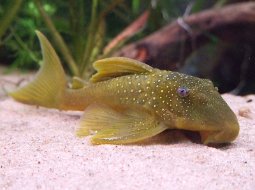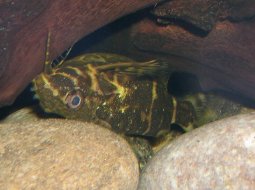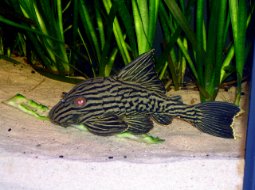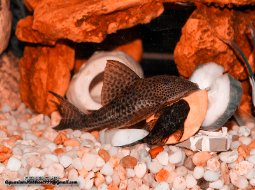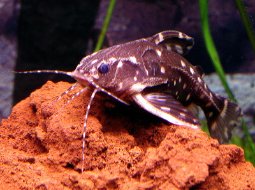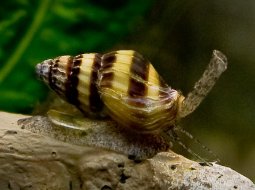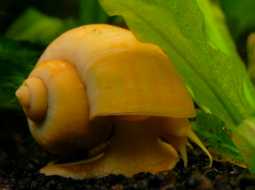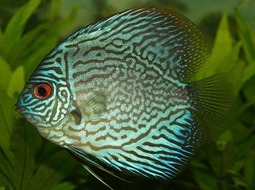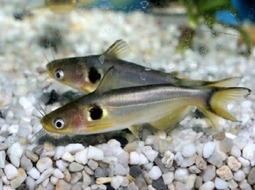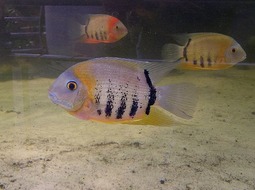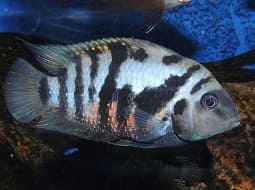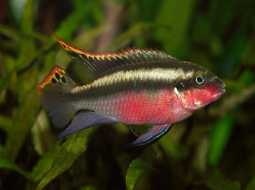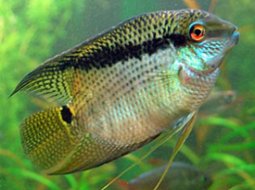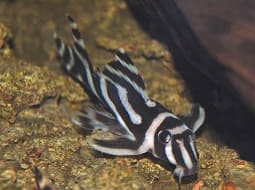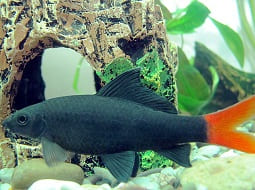
Loading Aqualapp ...
Care and Compatibility of Jewel Cichlid - Hemichromis lifalili
Introduction
Hemichromis lifalili, also known as the Jewel Cichlid or Fire Cichlid, is a cichlid species native to the Niger River basin in Africa. It has a compact and laterally compressed body with vibrant colors including reds, oranges, and metallic blues. Males are larger and more colorful than females. They are territorial and aggressive fish, so it is recommended to keep them in adequately sized aquariums with sufficient hiding spots. They feed on a variety of foods including pellets, flakes, live, and frozen foods. Reproduction occurs through mouthbrooding, where the female guards the eggs and fry in her mouth until they hatch.
Behavior
Hemichromis lifalili is a territorial and aggressive cichlid, especially during the breeding season and fry care. It is recommended to keep them in adequately sized aquariums that provide space for swimming and establishing territories. They can be aggressive towards other fish, so tank mates should be selected carefully. Hiding spots and areas with dense vegetation are important to provide refuge and help reduce aggression. Although they are hardy fish, maintaining good water quality and performing regular water changes are necessary to keep them healthy and thriving.
Sexual Dimorphism
Sexual dimorphism in Hemichromis lifalili is evident. Males have more intense colors and longer fins than females. During the breeding season, males may exhibit territorial behaviors and court females.
Reproduction
Reproduction in Hemichromis lifalili is oviparous. Males are territorial and build nests in the substrate or on flat surfaces using available materials in the aquarium, such as stones or shells. During courtship, males display their brightest colors and perform courtship movements to attract females. Once the female deposits the eggs, the male fertilizes them, and the female picks them up in her mouth. The mouthbrooding incubation lasts approximately 2-3 weeks, during which the female cares for and protects the eggs and fry. After hatching, the female releases the fry but continues to protect and carry them in her mouth in case of danger.
Aquarium Conditions
Hemichromis lifalili is a vibrant and colorful African cichlid that requires a spacious aquarium with rocks, hiding spots, and open swimming areas. It prefers warm, slightly acidic water. Aquarium décor should include rocks and driftwood to provide structure and hiding places. Maintaining water quality is important and providing a varied diet.
Feeding
Hemichromis lifalili is a carnivorous fish and feeds on a variety of foods. In the wild, their diet includes insects, crustaceans, and small fish. In the aquarium, it is recommended to offer high-quality commercial foods designed for carnivorous cichlids, such as pellets and flakes that contain animal-based ingredients. They also accept live and frozen foods such as mosquito larvae, daphnia, and brine shrimp. Feeding them several times a day in small quantities is recommended to avoid overfeeding.
Complexity
Caring for Hemichromis lifalili can be moderately challenging. They are territorial fish and can be aggressive towards other fish, especially during breeding and territory defense. It's recommended to keep them in pairs or large groups to distribute aggression. They require a balanced diet and regular aquarium maintenance.
In case you need more help, or if you want to know into any topic related to the Hemichromis lifalili (Jewel Cichlid) and even any other species you can use the forums to ask what you need.
To do an analysis more detailed about coexistence and behavior of Hemichromis lifalili (Jewel Cichlid) use the Aquarium simulation tool, if you do this you can test different ways to combine the Jewel Cichlid with other fishes giving the dimensions and space on you aquarium, on this way you can known the optimal configuration for keep the fishes that you want.
You can also find out the 25 species compatible with the Hemichromis lifalili (Jewel Cichlid) can live together.
Note: The parameters of the water such as PH and temperature are also used to calculate the compatibility of the species.
Compatible species (25)
Compatible (11 Species)
Compatible without any restriction
Similar Sizes (1 Species)
They can coexist if they are the same size or very similar sizes, it does not work in all cases, there may be exceptions.
With Reservation (8 Species)
Las especies territoriales por lo general pueden convivir con especies protegidas con coraza, ya que no pueden hacerles daño por su dura piel, lo que si hay que tener en cuenta es tener un acuario con dimensiones favorables para que cada pez pueda delimitar un territorio, ya que la mayoría de peces acorazados son también peces de fondo y les gusta estar buscando lugares donde ocultarse.
Compatible in some cases, it depends on the nature and personality of the fish.
Showdown over territory (2 Species)
Fish can live together as long as the space is spacious enough to delimit a territory, otherwise there may be aggressions for competing for the territory.
Compatible if space is enough (3 Species)
They can coexist together if the aquarium they share is large and spacious enough for both species to feel good, as some fish may attack others to feel that they have little space and try to eliminate the competition.
Jewel Cichlid
Hemichromis lifalili

- Ph: 6 - 6.9
- Temperature (c°): 24 - 27
- Measures: 13 cm
- Aquarium Capacity:
52 Liters - 14 Gallons - Alimentación: Carnivores
- Colores: Blue, Red, Yellow
- Comportamiento: Likes to take refuge, Semi Aggressive, Territorial
- Habitad: African
- Preferencias del Acuario: Natural plants, Rocks
- Tamaño: Medium
- Taxonomía: Cichlids, Fish, Mbunas
- Tipo de Agua: Sweet water, Tropical waters
- Velocidad de nado o movimiento: Normal
- Zona de Nado: Swim in the middle of the aquarium

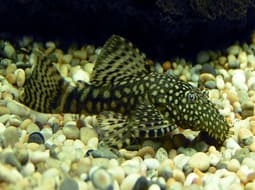
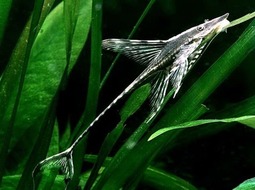
.jpg)
